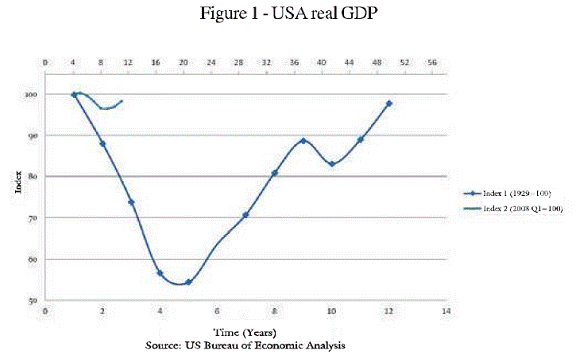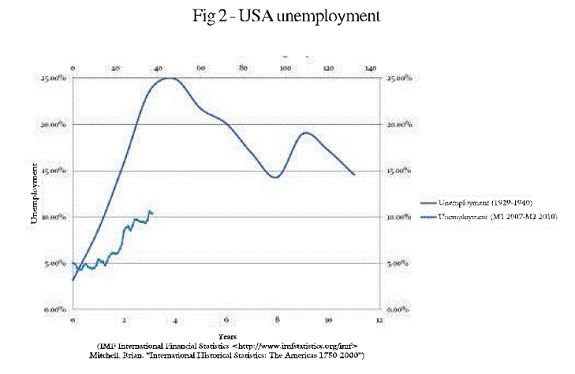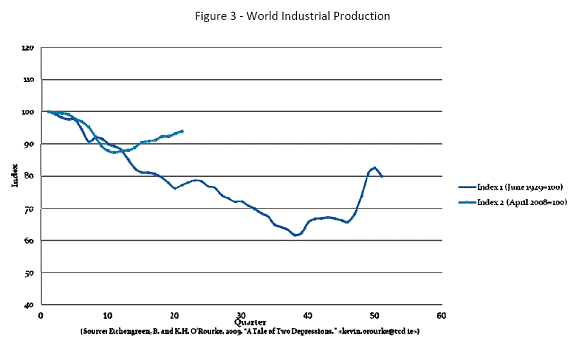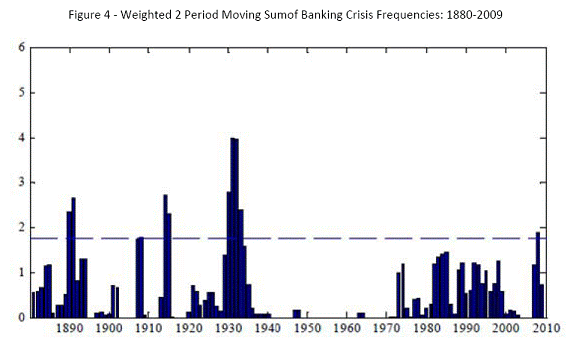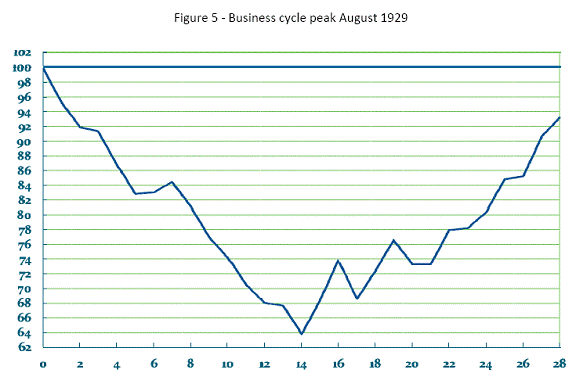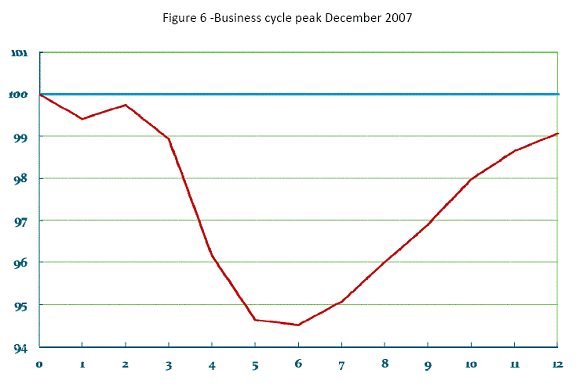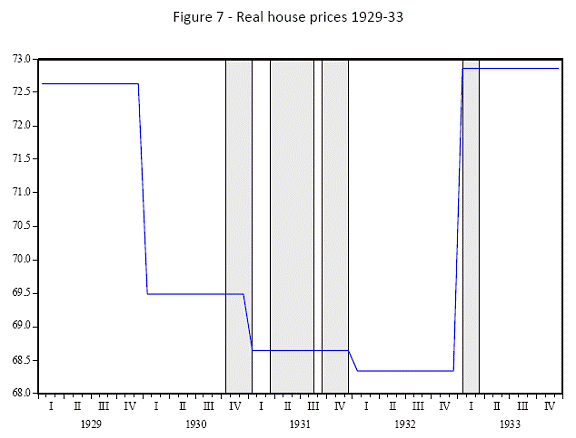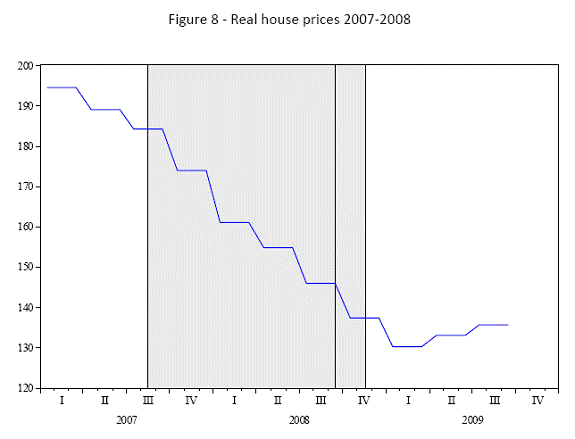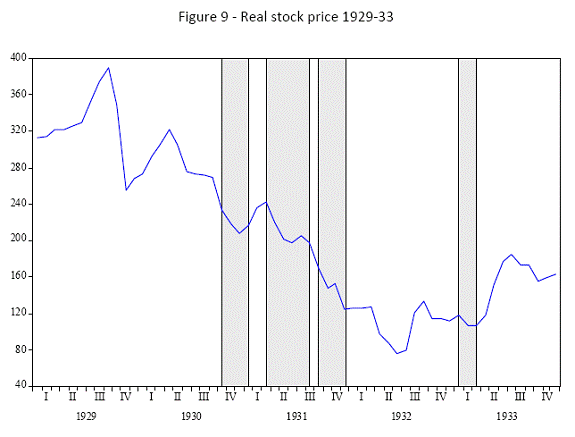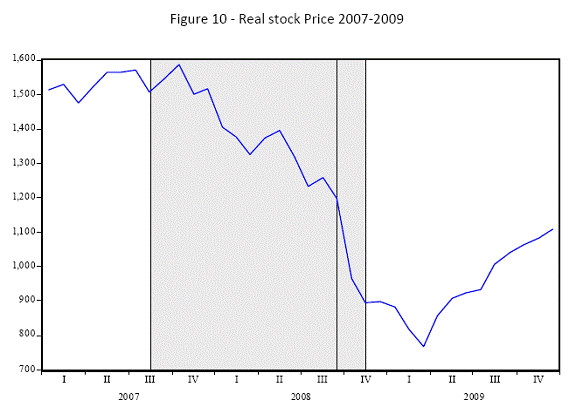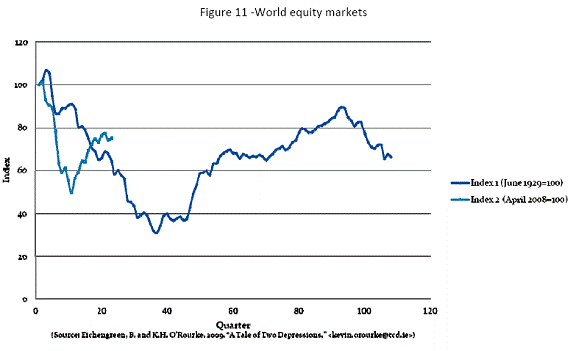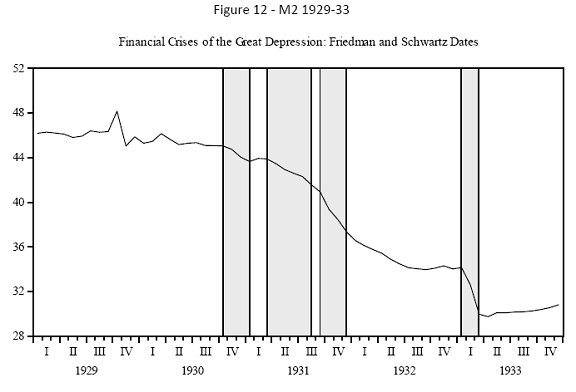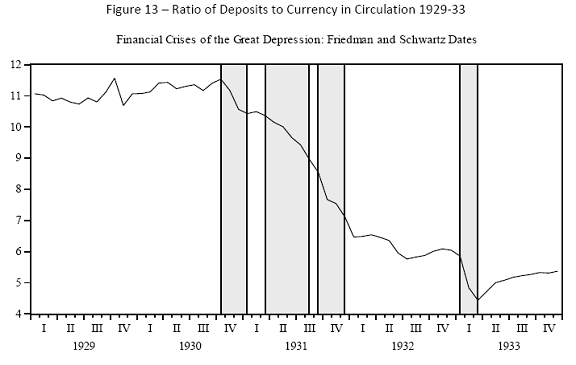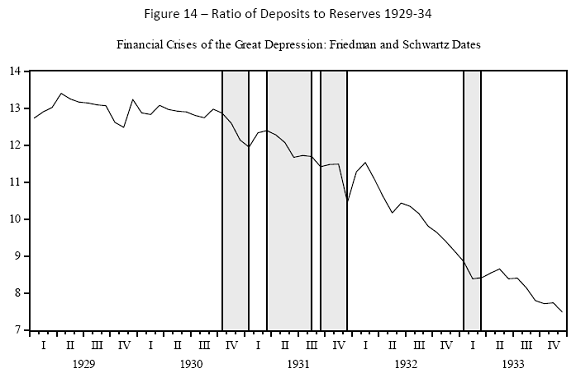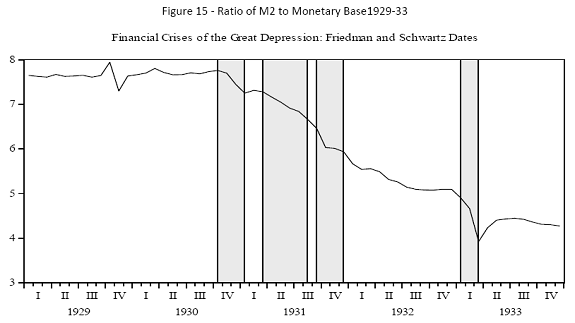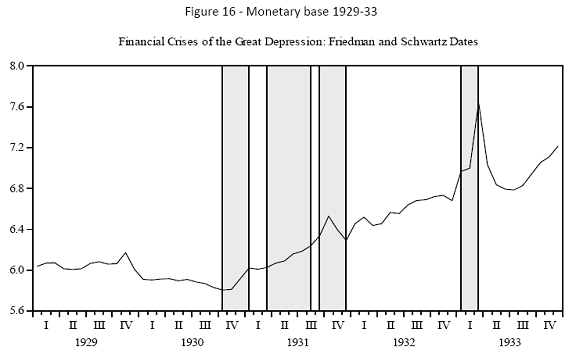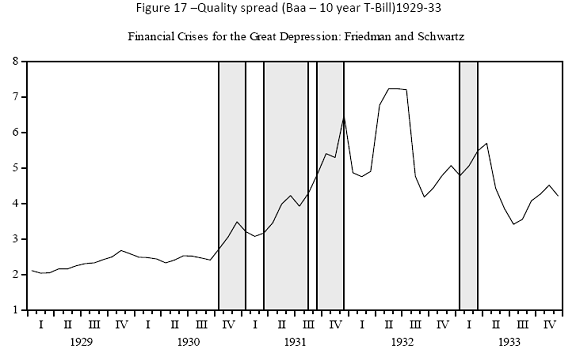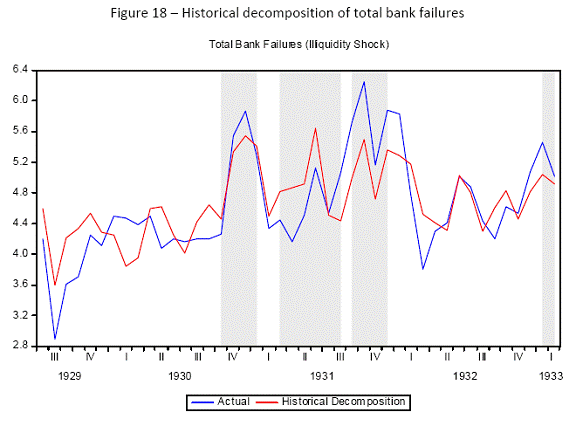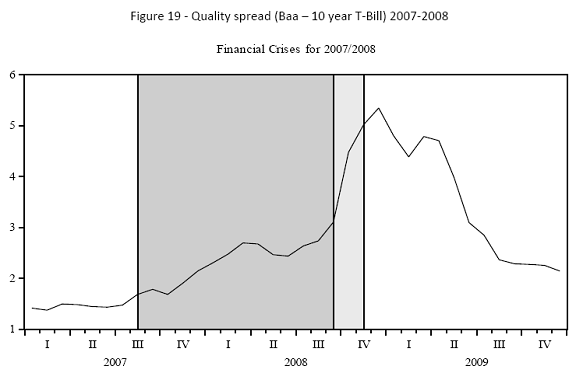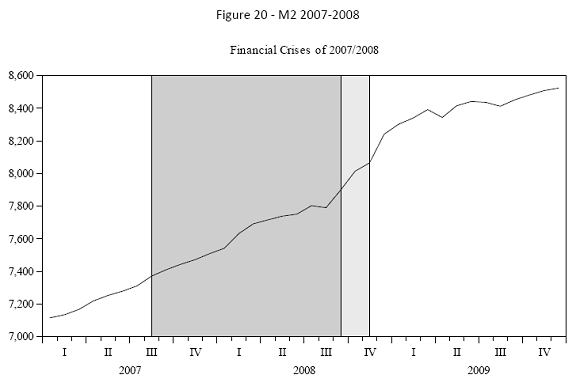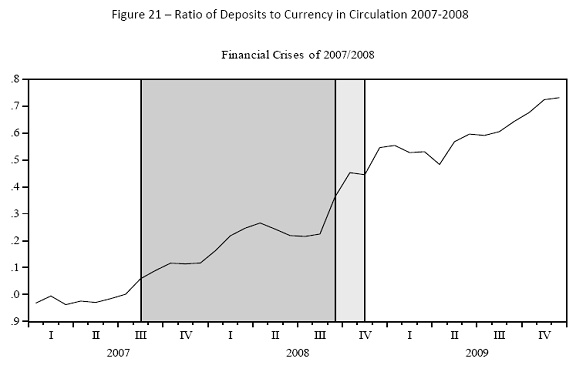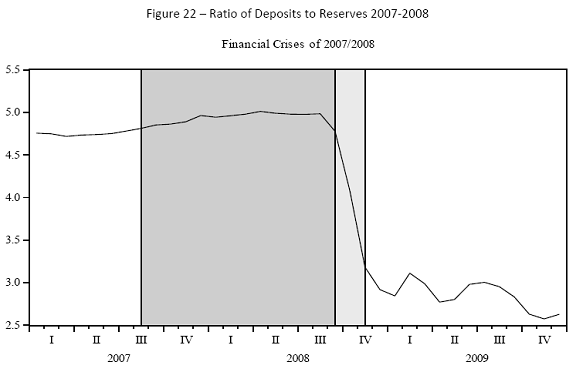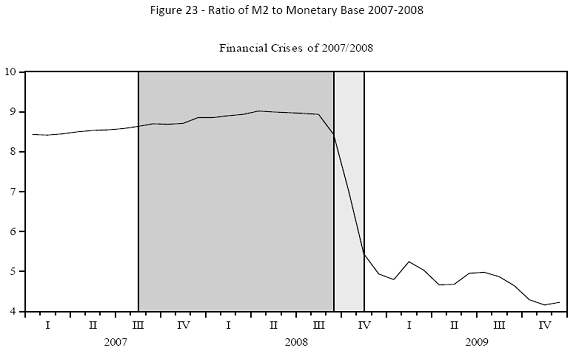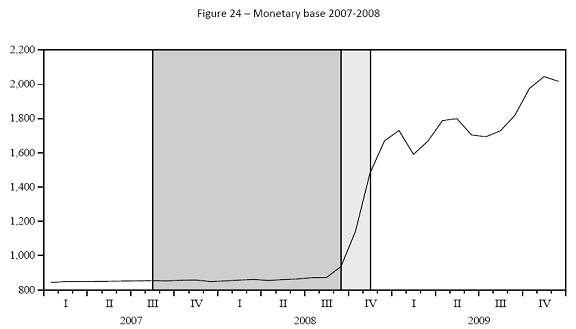 IST,
IST,


The Great Depression and the Great Recession: What Have We Learnt?
Prof. Michael D. Bordo, Guest Speaker
delivered-on એપ્રિલ 09, 2012
|
1. Introduction The Financial Crisis of 2007-2008 and the Great Recession of 2007-2009 are now in the past although the U.S. economy is still recovering but at an abnormally low pace, and Europe is in recession again following the debt crisis of 2010-2011. During the worst of the recent financial crisis/Great Recession many observers made comparisons between that event and the Great Depression. In this lecture I reevaluate the experience of the two events. I raise and answer five questions:
2. Some Comparisons Between Now and Then: The Similarities 2.1 The Downturn The first point to note is that in terms of the decline of the real economy as measured by real GDP or Industrial Production or Unemployment the Great Recession was a relatively minor event. Between 1929 and 1933 real GDP fell in the U.S. by close to 30 percent, whereas between 2007-2009 it fell by a little over 5 percent (Figure 1). Unemployment in the U.S. peaked at 25 percent in 1933 versus a little above 10 percent in 2009 (Figure 2). Other advanced countries experiences were similar. For a comparison between world industrial production in the 1930s and recently see figure 3. Secondly, both the recent financial crisis and the Great Depression were global financial crises. Bordo and Landon Lane (2010a) demarcated global financial crises for a large panel of countries from 1880 to the present using cluster analysis. We identified 7 such events of which 2007-2008 was one of the mildest. Its global incidence was considerably less than the 1930s (Figure 4). Moreover we found that the mean weighted cumulative percentage loss of real output for countries with financial crises in 2007-2008 which was -2.95 percent was one third of the comparable measure for the early 1930s which was -9.35 percent. These data which suggest that the recent experience wasn’t that bad doesn’t answer the question - “what would have happened if the Federal Reserve and other central banks didn’t follow the aggressive policies that they did?” Nor if there hadn’t been in place other elements of the financial safety net, such as deposit insurance and various automatic stabilizers. A third point of similarity is the nature of the recoveries after the trough of the recession. Both episodes had sluggish recoveries in terms of the real economy expanding after the business cycle trough at a slower pace than the downturn. The recovery after 1933 was very rapid but not quite sufficient to completely reverse the preceding downturn. One plausible explanation for the incomplete recovery in the 1930s is that it was impeded by the New Deal NIRA policy which attempted to cartelize both goods and product markets (Cole and Ohanian (2004)). The recent recovery is also sluggish and has been labeled a “jobless recovery” as was the case for the two preceding recessions. (Figures 5 and 6). There are several explanations for the sluggish recent recovery including Reinhart and Rogoff (2009) who see this pattern as typical of countries that have had big banking crises. My recent work with Joseph Haubrich (2011) finds that financial stringency does not explain the difference between this recovery and previous recoveries that had financial crises. We find that the collapse of residential investment which proxies for the collapse of the housing sector is the key determinant of the shortfall. A fourth similarity between now and then is that both episodes were preceded by asset price booms and busts. There was a housing boom and bust in the 1920s and the Wall Street boom and crash in 1929 (Figures 7 and 8). In the recent crisis it was the subprime mortgage related housing boom that burst in 2006 that triggered the crisis. Unlike the 1920s the tech boom of the early 2000s did not precipitate a financial crisis (Figures 9 to 11). 2.2 The Key Difference between the Two Crisis Episodes was in the Nature of the Banking Crisis The 1930s episode was an old fashioned liquidity based banking crisis brought on by the Fed’s failure to serve as lender of last resort. By contrast the recent crisis was more of a late twentieth century solvency driven banking crisis. Although Gary Gorton (2010) has argued quite forcefully that there was an old fashioned panic in the repo market and other aspects of the shadow banking system. Federal Reserve tightening to stem the Wall Street boom beginning in early 1928 led to the downturn which began in August 1929 followed by the Stock Market crash in October. However there is considerable evidence to refute the view that the Wall Street Crash caused the Great Depression. The real problem arose with a series of banking crises that began in October 1930 and ended with the Banking Holiday of March 1933. Milton Friedman and Anna Schwartz (1963) posited that the panics by reducing the deposit currency and deposit reserve ratios reduced the money multiplier and hence the money supply (Figures 12 to 16). The panics which began in 1930 and worsened in 1931 when it became global, reflected a contagion of fear as the public converted their deposits into currency i.e. they hoarded currency. The public staged a series of runs on the banking system leading to massive bank suspensions. In modern terms there was a big liquidity shock. The collapse of the money supply led to a decline in nominal spending and, in the face of sticky wages a decline in employment and output. The process was aggravated by banks dumping their earning assets in a fire sale and by debt deflation as falling prices increased the real burden of debt leading to insolvencies of banks with initially sound balance sheets. Bernanke (1983) also regarded the banking panics of the 1930s to be the key cause of the Great Contraction. Bank failures crippled the mechanism of financial intermediation. This effect can be seen in the quality spread (the Baa less 10 year US Treasury bond rate) (Figure 17). There is considerable debate over whether the clusters of bank failures in the early 1930s were really driven by contagious liquidity shocks as Friedman and Schwartz (1963) argued, or whether the bank failures reflected an endogenous response to the downturn that was caused by other non monetary forces, as posited by Peter Temin (1976) and recently by Charles Calomiris and Joseph Mason (2006). Recent evidence by Gary Richardson (2007) using newly unearthed Federal Reserve bank examiners’ analyses of all the bank failures that occurred in the early 1930s, finds that illiquidity shocks largely explain what happened in the banking panic windows identified by Friedman and Schwartz (1963). Bordo and Lane (2010b) conducted an econometric study of the banking panics of the 1930s to ascertain whether it was illiquidity or other factors including insolvency that largely explained the panics. We estimated a structural VAR using data on bank failures due to illiquidity, total bank failures, M2, unemployment, and the quality spread. Figure 18 shows the historical decompositions from the VAR model. Historical decompositions are a way to engage in counterfactual experiments by showing the impact of one variable holding the others constant. The figure shows that the liquidity shock mimics the actual data quite well for all of the crisis windows. The upshot of the banking panics according to Friedman and Schwartz (1963), Meltzer (2003), Bernanke (1983) and Wicker (1996) is that they represented a major Fed policy failure. The Fed which was founded in 1913 in large part to be a lender of last resort to the banking system failed in its duty. The Fed could have prevented the Great Contraction by using expansionary open market policy, a tool which was familiar to Fed officials. 3. The Recent Crisis The crisis of 2007-2008, like 1929-33, started with an asset price boom that later bust. The collapse of the subprime mortgage market led to a panic in the shadow banking system which was not regulated by the Fed nor covered by the financial safety net. These institutions (e.g. Goldman Sachs, JP Morgan, Bear Stearns, Lehman Brothers) which had expanded after the repeal in 1999 of the Depression era Glass Steagall act which had separated investment banking from commercial banking, had much more leverage than traditional banks and were much more prone to risk. When the crisis hit they were forced to engage in major deleveraging involving a fire sale of assets into a falling market. This lowered the value of their assets and those of other institutions. A similar negative feedback loop had occurred in the 1930s. Gorton (2010) posits that the crisis started in the repo market which had been collateralized by opaque (subprime) mortgage backed securities by which the investment banks and universal banks had been funded.The repo crisis continued through 2008 and then morphed into an investment/universal bank crisis after the failure of Lehman Brothers in September 2008. The crisis led to a credit crunch which led to a serious recession. The effects of the credit crisis can be seen in the spike of the quality spread in the fall of 2008. It looks similar to what happened in 1931 (Figure 19). However the recent crisis was not a contagious banking panic. There was no collapse in money supply brought about by the collapse of the deposit currency ratio as had occurred in the 1930s. M2 didn’t collapse. Indeed it rose, reflecting expansionary monetary policy (Figure 20). The deposit currency ratio rose (Figure 21). There was no run on the commercial banks because depositors knew that their deposits were protected by federal deposit insurance which had been introduced in 1934 in reaction to the bank runs of the 1930s. The deposit reserve ratio declined reflecting an expansionary monetary policy induced increase in the banks excess reserves rather than a scramble for liquidity as had occurred in the 1930s (Figure 22). The money multiplier declined in the recent crisis (Figure 23) reflecting a massive expansion in the monetary base (Figure 24) seen in the Fed’s doubling of its balance sheet in 2008. Moreover although a few banks failed between 2007-2010 the numbers of failures and the size of the losses were small relative to the 1930s. Thus the recent financial crisis was not driven by a Friedman and Schwartz type banking panic. But there was a panic in the shadow banking system and it was driven more by insolvency than by contagious illiquidity considerations. The problem stemmed from the difficulty of pricing securities by a pool of assets where the quality of individual components of the pool varies and unless each component is individually examined and evaluated, no actual price can be determined. As a result, the credit market, confronted by financial firms whose portfolios were filled with securities of uncertain value, derivatives that were so complex the art of pricing them had not been mastered, was plagued by the inability to determine which firms were solvent and which were not. Lenders were unwilling to extend loans when they couldn’t be sure that a borrower was credit worthy. This was a serious shortcoming of the securitization process that was responsible for the paralysis of the credit market. 4. The Response to the Crisis The Federal Reserve had learned the Friedman and Schwartz lesson from the banking panics of the 1930s of the importance of conducting expansionary open market policy to meet all demands for liquidity (Bernanke 2002). In the recent crisis the Fed conducted highly expansionary policy in the fall of 2007 and from late 2008 to the present. Fed policy was likely too cautious in the first three quarters of 2008 seen in high real interest rates and flat growth in the monetary aggregates (Hetzel 2009). However from the last quarter of 2008 to the present Fed policy has been highly expansionary as it pushed the federal funds rate to close to zero and embarked on an aggressive policy of quantitative easing. Also based on Bernanke’s (1983) view that the 1930s banking collapse led to a failure of the credit allocation mechanism, the Fed, in conjunction with the Treasury, developed a plethora of extensions to its discount window, referred to by Goodfriend (2011) as credit policy, to encompass virtually every kind of collateral in an attempt to unclog the credit markets. Finally, another hallmark of the recent crisis which was not present in the Great Contraction is that the Fed and other U.S. monetary authorities engaged in a series of bailouts of incipient and actual insolvent firms that were deemed too connected to fail. These included Bear Stearns in March 2008, the GSE’s (Fannie Mae and Freddie Mac) in July 2008 and AIG in September. Lehman Brothers had been allowed to fail in September on the grounds that it was both insolvent and not as systemically important as the others and as was stated well after the event that the Fed did not have the legal authority to bail it out. Indeed, the deepest problem of the recent crisis was not illiquidity as it was in the 1930s but insolvency and especially the fear of insolvencies of counterparties. This has echoes in the correspondent induced banking panic in November 1930 (Richardson 2006). But very different from the 1930s , the too big to fail doctrine which had developed in the 1980s ensured that the monetary authorities would bail out insolvent large financial firms which were deemed to be too interconnected to fail. This is a dramatic departure from the original Bagehot’s Rule prescription to provide liquidity to illiquid but solvent banks. This new type of systemic risk raises the specter of moral hazard and future financial crises and bailouts. Thus the policy response of aggressive monetary policy learned from the experience of the Great Depression greatly helped attenuate the impact of the financial crisis on the real economy. But the sources of systemic risk differed considerably between the two episodes: a contagious banking panic then, an insolvency driven counterparty risk problem recently. The monetary authorities were slow to catch on that insolvency was the key issue. Once they did they bailed out institutions deemed to be too interconnected to fail. This doctrine was not followed in the U.S. in the 1930s. The insolvent Bank of United States, which was one of the largest banks in the country, was allowed to fail. 5. The Key Pressing Monetary Policy Issues for the Future The first issue is the exit strategy, i.e. when should the Federal Reserve return from its current stance where the federal funds rate is close to zero to one consistent with long run growth and low inflation? The risks facing monetary policy with respect to the exit are two- fold: tightening too soon and creating a double dip recession as occurred in 1937-38; and tightening too late leading to a run up of inflationary expectations. There are many examples of each type of error. My paper with John Landon lane (2010c) on the history of Federal Reserve exits since 1920 suggests that in the post World War II era, the Fed usually began tightening once unemployment peaked and often after inflation has resurfaced. We found that tightening often occurs two quarters after the peak in unemployment. It seems doubtful that this will happen since unemployment is still above 8 percent. Indeed political pressure and the way the Fed has interpreted its dual mandate will likely ensure that the Fed doesn’t begin tightening before 2013 and moreover the Fed has signaled that it will keep its policy rate low until 2014. But the lessons from the last two jobless recoveries is that the Fed kept rates too low for too long leading first to the inflation spike in 1994 and the Tequila crisis and second the housing boom in the 2000s. Moreover to the extent that the sluggish recovery reflects problems in the housing market, it is not clear what more monetary policy can do. Will history repeat itself? My guess is that it will. The second pressing issue coming from the bailouts of 2008 is that in the future the too big to fail doctrine will lead to excessive risk taking by such firms and future crises and bailouts. This was a major concern in the debate leading to the recent Dodd Frank Wall Street Reform and Protection Act, passed in July 2010 and still to be fully implemented. The act attempted to address the too big to fail problem by establishing a Financial Stability Oversight Council made up of members from the Federal Reserve Board, the Treasury, the Securities and Exchange commission and a number of other financial agencies. The Council was charged with identifying and responding to emerging risks throughout the financial system. It would make recommendations to the Federal Reserve to impose increasingly strict rules for capital and leverage and other requirements to prevent banks from becoming too large and systemically connected. It remains to be seen whether it will be effective in preventing future crises. The financial reforms of the 1930s (Federal Deposit Insurance, Glass Steagall and interest rate ceilings) were designed to prevent the problems perceived as having created the Great Depression. They succeeded in creating a stable but repressed financial system for over three decades. Beginning in the late 1960s, rising inflation, financial globalization and financial innovation to circumvent the controls made much of this regime obsolete. Along with financial innovation and the proliferation and expansion of financial markets and institutions, the financial crisis problem has resurfaced. That historical experience suggests that financial crises may not be so easily abolished. References Bernanke, Ben (1983), “Non Monetary Effects of the Financial Crisis in the Propagation of the Great Depression”, American Economic Review, vol. 73, pp. 257-76. Bernanke, Ben (2002), ‘On Milton Friedman’s Ninetieth Birthday’, Speech given at the University of Chicago, November 8, 2002. Bordo, Michael, and John Landon Lane (2010a), “The Global Financial Crisis of 2007-2008: Is it Unprecedented?”, NBER Working Paper No. 16589. _____ (2010b), “The Lessons from the Banking Panics in the United States in the 1930s for the Financial Crisis of 2007-2008”, NBER Working Paper No. 16365. _____ (2010c), “Exits from Recessions: The U.S. Experience 1920-2007”, NBER Working paper No. 15731. Bordo, Michael, and Joseph Haubrich (2011), “Deep Recessions, Fast Recoveries and Financial Crises: Evidence from the American Record”, Federal Reserve Bank of Cleveland (mimeo). Calomiris, Charles, and Joseph Mason (2003), “Fundamentals, Panics and Bank Distress during the Depression”, American Economic Review, Vol. 93(5), pp. 1615-47. Cole, Hal, and Lee Ohanian (2004), “New Deal Policies and the Persistence of the Great Depression: A General Equilibrium Analysis”, Journal of Political Economy, Vol. 112, pp. 779-816. Friedman, Milton, and Anna J. Schwartz (1963), A Monetary History of the United States. Princeton: Princeton University Press. Goodfriend, Marvin (2011), “Central Banking in the Credit Turmoil: An Assessment of Federal Reserve Practice”, Journal of Monetary Economics, Vol. 58, pp. 1-12. Gorton, Gary (2010), Slapped in the Face By the Invisible Hand: Banking and the Panic of 2007, Oxford University Press. Hetzel, Robert (2009), “Monetary Policy in the 2008-2009 Recession”, Federal Reserve Bank of Richmond Review, September. Meltzer, Allan (2003), A History of the Federal Reserve, Vol. I, University of Chicago Press. Reinhart, Carmen, and Kenneth Rogoff (2009), This Time is Different, Princeton University Press. Richardson, Gary (2006), “Correspondent Clearing and the Banking Panics of the Great Depression”, NBER Working Paper No. 12716. _____ (2007), “Categories and Causes of Bank Distress during the Great Depression, 1920-1935: the Illiquidity versus Solvency Debate Revisited”, Explorations in Economic History, Vol. 44, No 4. October, pp. 588-607. Temin, Peter (1976), Did Monetary Forces Cause the Great Depression? New York: W.W. Norton. Wicker, Elmus (1996), The Banking Panics of the Great Depression, New York: Cambridge University Press.
|
પેજની છેલ્લી અપડેટની તારીખ:






